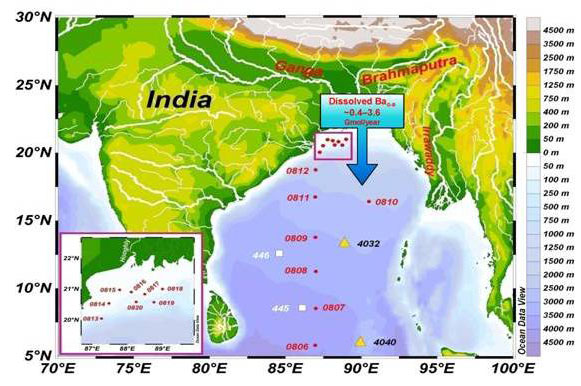Tracking the Indian Ocean source of barium
Intermediate waters of the Bay of Bengal can be a significant source of dissolved barium (Ba) to the Indian Ocean. This is the conlusion of an extensive study of the dissolved Ba distribution along a north-south section in the Bay of Bengal conducted by Satinder Pal Singh and co-workers. At steady state, researchers found that the annual Ba influx from the Ganga-Brahmaputra river system to the surface waters seems to be balanced through its removal via sinking particulates, resulting in no lateral outflow of dissolved Ba from the Ganga-Brahmaputra to the Indian Ocean through these surface waters. However, most of this sinking particulate Ba (~95%) is regenerated in the intermediate waters ~100-500 m. Therefore, frequently ventilated intermediate waters of the Bay of Bengal, receiving a large input of dissolved Ba through particle remineralization can be a significant source of dissolved Ba to the Indian Ocean.

Figure: Locations of seawater profile samples (depth profiles collected in this study are represented by red circles whereas white squares during the GEOSECS programme). The yellow triangles are locations of the sediment cores 4032 and 4040. The box is an enlarged view of the locations of shelf stations. Click here to see figure larger.
Reference:
Satinder Pal Singh, Sunil Kumar Singh, Ravi Bhushan (2013), Internal cycling of dissolved barium in water column of the Bay of Bengal, Marine Chemistry 154, p. 12-23 DOI:10.1016/j.marchem.2013.04.013. Click here to access the paper.
